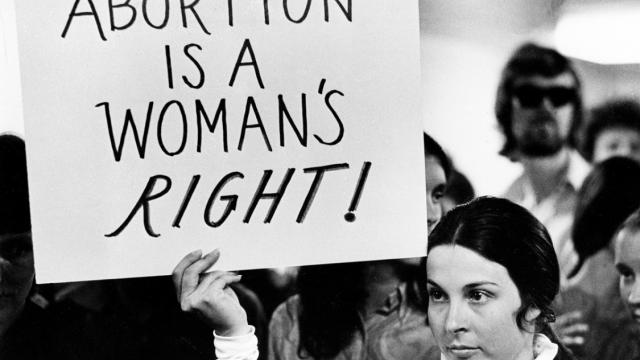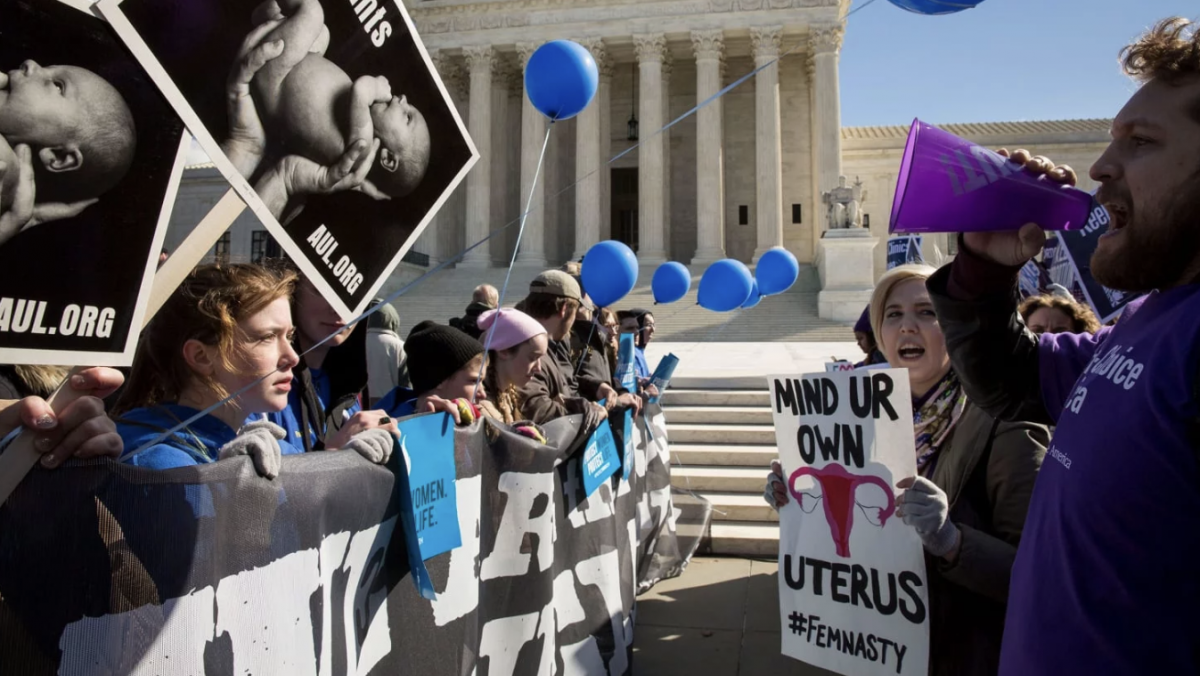
Soon, perhaps within the next two years, the U.S. Supreme Court will overturn Roe v. Wade. It might not admit what it’s doing. It might cloak its reversal in minimalist rhetoric and even pretend to adhere to Roe. But the upshot will be the same. After Donald Trump replaces Justice Anthony Kennedy, the court’s new conservative majority will allow states to outlaw abortion.
To understand why the practical death of Roe is all but assured, it’s important to recognize that Roe is already effectively dead letter in many parts of the country. That’s because, in 1992, the Supreme Court—with Justice Anthony Kennedy’s vote—substantially watered down Roe’s promise in Planned Parenthood v. Casey. The Casey court found that while abortion does fall within the “liberty” protected by the Constitution, states may “enact persuasive measures which favor childbirth over abortion, even if those measures do not further a health interest.” Indeed, under Casey, a state can limit women’s access to abortion, so long as it does not place an “undue burden” on her ability to terminate a pregnancy.
The undue burden test proved infinitely malleable for decades, allowing states to impose draconian requirements on abortion clinics and patients. Legislators shuttered clinics across the country through so-called TRAP laws, forcing many women to travel hundreds of miles to obtain clinic-based abortion care. And even then, they might not be able to get it. States imposed dayslong waiting periods, as well as mandatory ultrasounds and counseling, during which a doctor could be compelled to tell a patient lies about the procedure. A majority of states have prohibited the use of public funds to finance abortions, and 11 restrict private insurance companies’ ability to cover the procedure. Many clinics simply cannot afford to comply with this onslaught of regulations. Today, there are seven states in which there is just one extant abortion provider.
And that is the state of affairs with a Supreme Court that putatively protects the right to abortion. In 2016, with Kennedy’s vote, the court did strike down a Texas law imposing stringent and gratuitous regulations on abortion clinics. But the vote was 5–3. Chief Justice John Roberts dissented, as did Justices Samuel Alito and Clarence Thomas, asserting that Texas’ rules did not create an “undue burden” for women. (Justice Antonin Scalia had recently died; no one seriously doubts that his successor, Justice Neil Gorsuch, would’ve dissented, too.)
The Texas law was notably extreme. It required abortion clinics to meet the exceedingly high standards of ambulatory surgical centers, forcing providers to upgrade all of their facilities, down to ventilation systems and parking lots, with no actual benefit to patients. In response, 22 of the state’s 41 clinics closed, unable to afford these exorbitant renovations, leaving vast swathes of the state without an abortion provider. If Texas’ flagrant effort to shut down abortion clinics doesn’t pose an “undue burden,” what does? Nothing—and that’s exactly how the court will undo Roe and Casey.
Here is what will happen. A state will create some extreme obstacle to abortion access, like Arkansas’ effort to ban medical abortions. Advocates will sue, alleging that the law is unconstitutional. The Supreme Court will take the case. And it will hold, by a 5–4 vote, that the law in question is not an “undue burden” under Casey.
Then the floodgates will open. Republican legislators will realize that the court’s conservative majority has given them the high sign: It will affirm the legality of any abortion restriction that comes before it. The court does not have to declare that it is overturning Roe and Casey in order to do so. It need only snip away at these precedents until nothing is left of them. And then, if the court so chooses, it can acknowledge what it has done and formally announce that there is no longer a constitutional right to abortion.
We know anti-abortion activists will use this strategy because they have done so before. The Supreme Court decided Roe in 1973. By the 1980s, a majority of the Supreme Court appeared ready to overturn Roe outright. To lay the groundwork for repeal, the court issued a series of decisions that incrementally cut back Roe without stating its rather obvious end goal. The scheme failed when Kennedy defected in Casey. But this time around, the conservative justices will probably move more quickly and aggressively. The next abortion case to hit the Supreme Court’s docket could wind up being Casey’s death knell.
It is difficult to overstate the extent to which modern Republican activism around the Supreme Court hinges on abortion. Roberts, Alito, and Gorsuch were selected because a coterie of very smart lawyers felt totally confident that they would overturn Roe and Casey. The same will be true of Kennedy’s replacement. And Thomas is an avowed opponent of both decisions. To believe that Roberts is a true swing vote on abortion is to believe that the Republican strategists who vetted him—many of whom have devoted their lives to the anti-abortion crusade—were fools. They were not fools. They picked Roberts for a reason. They will pick Kennedy’s successor for the exact same reason.
When Roe dies, it may well die with a whimper. But Kennedy’s action on Wednesday ensured that it will go. While blue states could attempt to preserve abortion access in Roe’s absence, a Republican-controlled Congress could pass an absolute federal ban. A GOP Congress could also curtail liberal legislators’ ability to protect abortion rights by foisting extreme regulations on clinics, outlawing abortion after a certain number of weeks, or barring a woman from terminating a pregnancy on the basis of the fetus’ disability or identity. And the Supreme Court would let it all happen.
Trump has entrusted his allies at the Federalist Society to help him follow through on his campaign promise to appoint judges who will overturn Roe. They will not mess up this opportunity. As of Wednesday afternoon, the constitutional right to abortion access in America is living on borrowed time.












